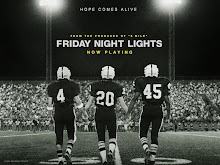
In 2004, the creators of the box-office hit Independence Day came out with another apocalyptic science-fiction film. Roland Emmerich's The Day After Tomorrow soon became one of the highest grossing films of all time. The crisis brought into account something that the entire world had been avoiding and hushing up for quite some time. Global warming, although indirectly, was finally being addressed to. Critics however did not much agree with the scientific accuracy of the film. Nonetheless, the destruction the film showed, opened eyes.
In 2006, came out a documentary on global warming. The piece was written by former United States Vice President Al Gore. An Inconvenient Truth was not merely a film on global warming. Not only did it address the entire topic at point blank, it also did not make the use of computer generated graphics to show us the crisis we were facing. Finally, the issue that the world might indeed be on the verge of chaos, the fault being our very own, was coming out into the open.

An Inconvenient Truth, apart from being an eye-opener by the time it ends, is also a film made with a lot of care. Just by looking at Al Gore throughout the entire screenplay, one notices the flawlessness with which he talks about the issues of rising CO2 levels and the state of the earth at the time of the last Ice Age. Even if The Day After Tomorrow was termed as scientifically inaccurate, it showed us things which, after seeing An Inconvenient Truth, one will realize were right. The known fact that students have learnt in school, about the temperature rising and the melting of the polar ice-caps resulting in a rise in sea-level, which eventually drowns low-lying areas, etc etc; is all true. All that and more. A particular sequence in the film shows us Al Gore commenting on satellite images of various low-lying areas of the world- The San Francisco Bay, the area around the rivers of Japan, the Bay of Bengal. Then comes the unexpected turn. The images that follow show us the state these places will be in in less than fifty years time given the continuation of dumping CO2 into the atmosphere at the present rate. The images are shocking, showing us the displacement of over 100million people all over the world. And that, speaking for itself, happens to be just the beginning.
When they marketed the film with taglines like 'Nothing is scarier than the truth' and 'By far the most terrifying film you will ever see' they actually meant it. An Inconvenient Truth beats any blood and gore slasher film when it comes to chills. The photographs of places on earth taken now and decades ago will shock you beyond belief. The change the earth has gone through in the last fifty years is more than the change it went through in the previous thousand. That itself is fact enough to make anyone realize the need for change, and the time at which the chance to act is running out. A very noticeable factor about the film's narrative is that Al Gore explains the entire progress of global warming, its consequences, etc etc; almost in layman's terms. More often than not he uses cartoons to explain the situation and bring it to life. The technique not only adds as a comic relief, but it also acts as a more effective explanatory technique ending with the realization of something dire. Making the truth all the more difficult to handle. It is a contrast that he uses to full effect.

An Inconvenient Truth also shares with us the life of Al Gore. One gets a very warm feeling listening to his story, right from the start. From where he lived, to how he grew up, and all for the purpose of showing us how much he wants us to care for his cause, how much he wants to see this world care about itself. It's very easily noticeable, how much effort the man himself has put into this project. The fact that the entire team have dedicated their heart and soul to this cause shows very clearly. This is not a film. This is a lesson. A lesson about the wrongs we have done to our planet, and the consequences we must face unless we rectify them. A lesson that everyone on the face of the earth should learn to see what Mother Earth is going through at the cost of our progress. It is time to face the music.
At the end of the film, contrasting the image of the Earthrise, which is perhaps the most influential environmental photograph ever taken, Gore talks about another photograph (the one above). It is a photograph taken by the Voyager 1 spacecraft taken from a record distance of 6.4 billion kilometers away. Known as 'Pale Blue Dot', the image is exactly as its name tells us. It is the Earth, lost in the vastness of space, a small dot in the middle of nowhere. An insignificant speck on the face of the Universe..
Or is it?
Care.




































2 comments:
very beauitful.
and yes you are toh VERY nice only...
thanks.
:)
you're welcome.
:)
Post a Comment